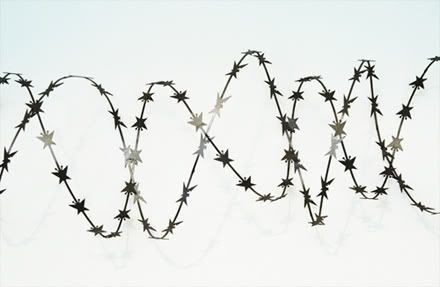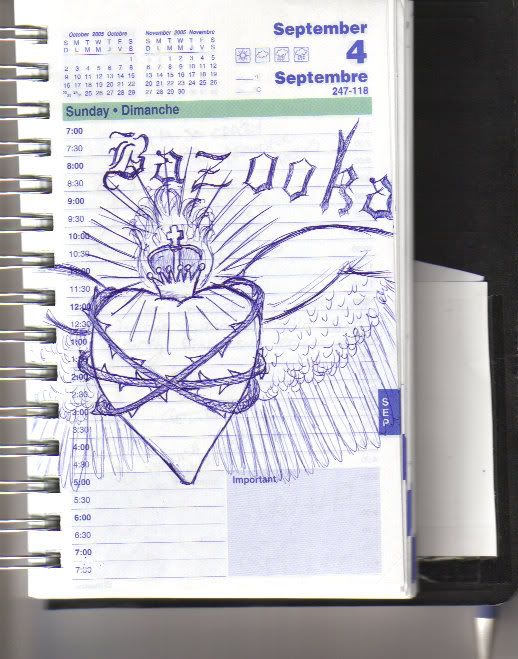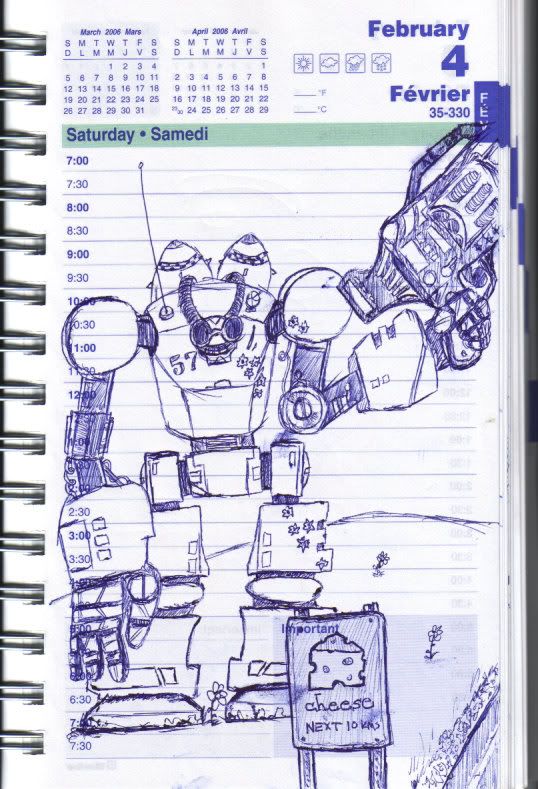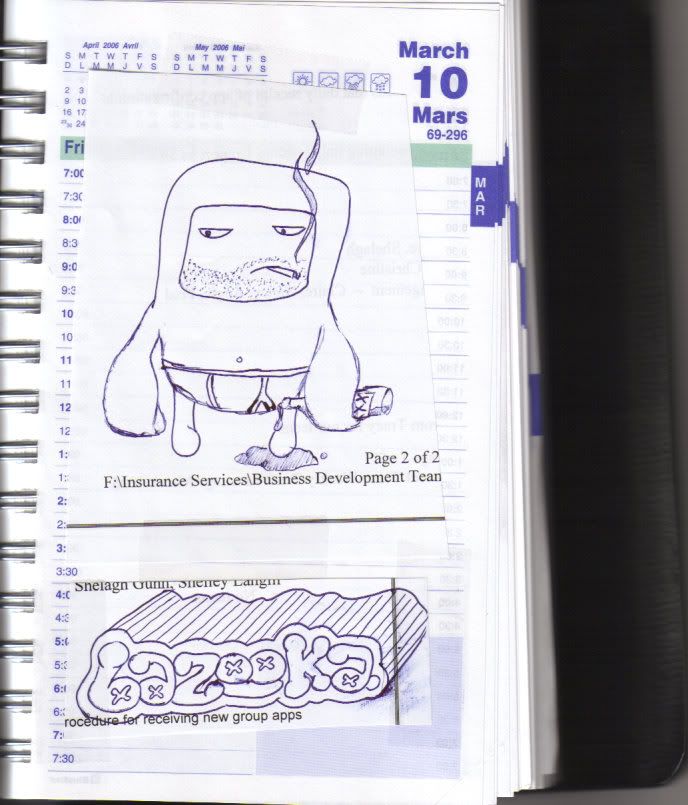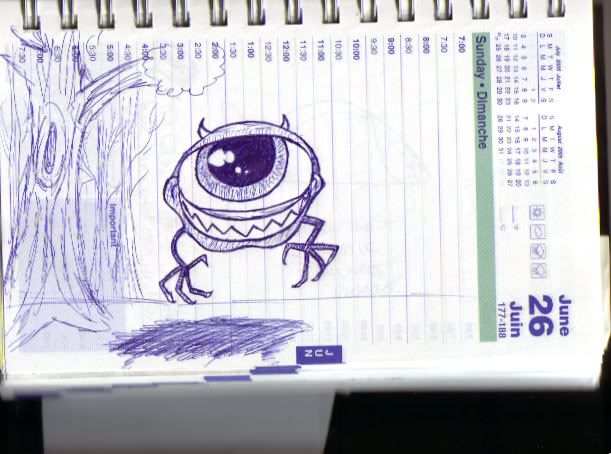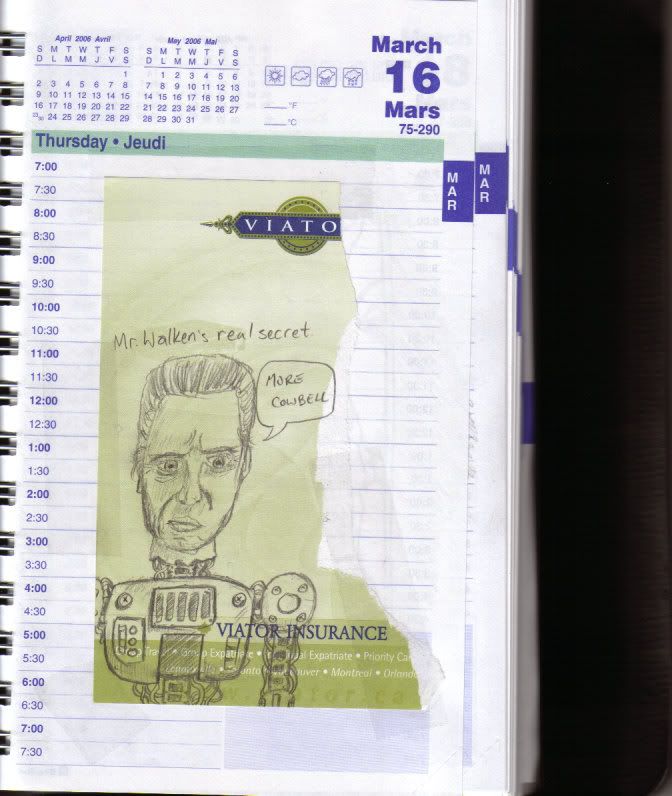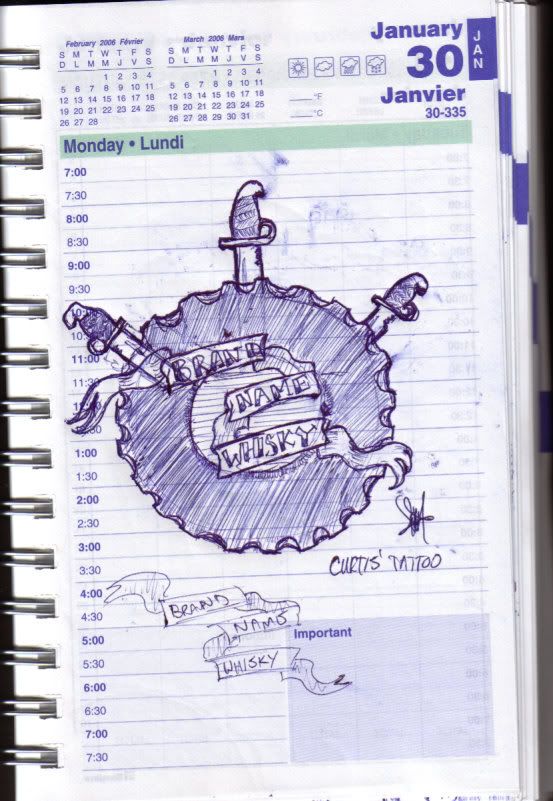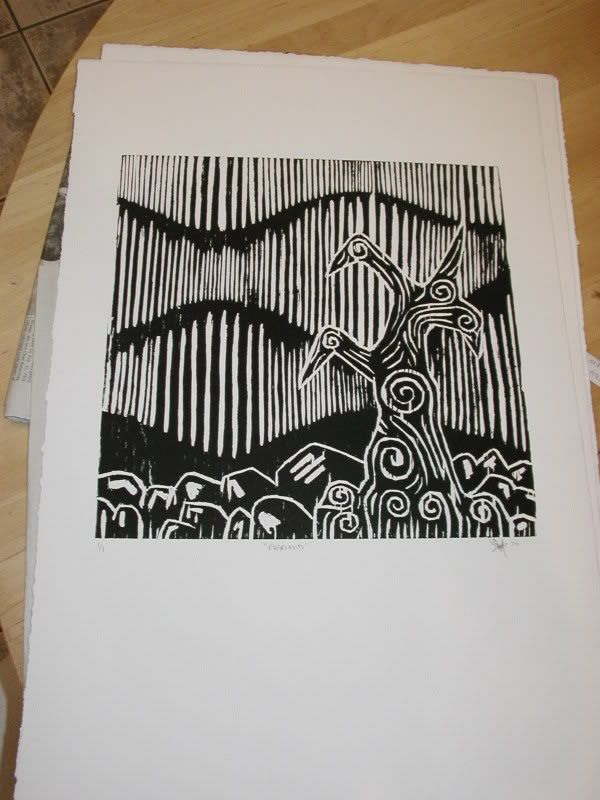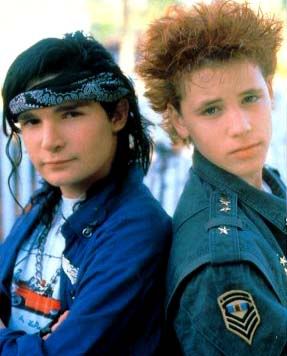Who wants to learn about sleep deprivation? I bet YOU DO!
Abstract
This essay will pose and attempt to answer the questions; how detrimental can lack of sleep be for an individual? How does sleep deprivation affect a person’s mental abilities? I will argue that the loss of sleep over time does have a negative effect on one’s mental abilities. Through the analysis of experimentation and case studies, this essay will show that loss of sleep in nearly any amount is detrimental to an individual’s mental well being. Facts state that concentrated effort can improve results, but only for brief periods. Research shows that loss of sleep over time does have a negative effect on mental abilities.
C. Brandon
The Effects of Sleep Loss Over Time
Introduction
Background In this essay I will cover the topic of sleep deprivation and its effects on mental abilities. I was inspired to choose this topic due to a history of negative personal experience with lack of sleep. The experiences have ranged from feeling a little surly to feeling an intense frustration at an inability to think straight. I also thought that since I am just beginning my university career I should find out what I am up against. This area of research should be of interest to all people since everyone sleeps and it seems as though there aren’t many people who get all the sleep they need all the time. It is important to understand if and how lack of sleep can affect you, and what you can do about it. This essay will pose and attempt to answer the questions; how detrimental can lack of sleep be for an individual? How does sleep deprivation affect a person’s mental abilities?
Purpose It is very likely that everyone has experienced sleep deprivation at some time, whether they are aware of it or not. Staying up late cramming for exams, being awoken by your surprisingly loud baby, your bottle breaking dance music loving neighbors or just having a good time with friends - all can result in the loss of precious sleep. The consequences of a sleep deficit are usually quite small but can easily add up over the course of a week, or weeks, and can sometimes cause unwelcome effects. The loss of sleep over an extended period can be quite damaging and, based on some experiments on rats, can lead to death. Rechtschaffen (1965; cited in Coren, 1996, p 55). Aside from the grave consequences, the loss of sleep over time will have negative effects on an individual’s mental abilities such as impede response time, cognitive acuity and memory retrieval. Despite what Thomas Edison thought of sleep, “. . . loss of time, vitality, and opportunities,” sleep is indispensable to our health and well being.
Argument
The causes of sleep loss are as common as the effects that it, in turn, can cause. In many ways they are a big part of modern living in the capitalist countries with the continually harried pace of 21st century life. The struggle to be more productive with the meager 24 hours allotted to us in a day, cramming in those few extra pages of study and a couple of extra quotas before bed. It can even be for more innocent reasons as well, for instance; many people lose their precious sleep to caffeine drank too near to bedtime. Maybe psychologists are doing experiments on you? Perhaps a young couple’s cranky temperament and sullen expressions stem from their new bundle of joy that they struggle to call a miracle at 5am. Of course there are more uncontrollable issues and disorders that some unfortunate individuals struggle with that cause their lack of sleep. Sleep apnea is the inability to properly breathe while sleeping which can be a major part of interrupted slumber. Sleep walking, apart from being dangerous, can easily disturb a person’s rest. Other factors include narcolepsy which is intense sleepiness during the day with partial and total paralysis, night terrors that as yet no one knows the cause, and sleeping pills which can cause insomnia Lugaresi (1968; cited in Dement, 1972, 73 – 81). These are all things that over time can begin to cause symptoms of sleep deprivation in a person.
“Sleep Deprivation Influences Some but Not All Process of Supervisory Attention” by J.R Jennings et al, was an experimental study on one night of sleep deprivation and tests on supervisory attention the following day. There were ten men and ten women with a mean age of twenty-two. A twelve hour day of testing was carried out after an ordinary night’s sleep for control and then another twelve hour day of testing followed a night with no sleep at all a week later.
The testing consisted of arrows appearing on a computer screen of different size, colours and direction. The subjects were required to categorize the arrows by corresponding keys on the keyboard as quickly and accurately as possible.
The conclusions of the study were that a single night of sleep deprivation did not affect the subject’s ability to complete the tests given, but it did effect the speed they were able to complete the tasks. The sleep deprived subjects were considerably slower in their reaction time. (See Table 1 in appendix) I think it would have been interesting to see the study extended for at least a second day to see if results were more noticeable. Physical testing, surveys on mood and tests on decision making abilities could also have been administered as the researchers already had subjects in a sleep deprived state.
“One Night of Total Sleep Deprivation Impairs Implicit Learning in the Serial Reaction Task, but Not the Behavioral Expression of Knowledge” by Herbert Heuer & Wolfhard Klein, was an experimental study on total sleep deprivation of one night on learning. It included 18 male participants with a mean age of 24.9 years old. 12 were deprived of sleep in the lab and 6 were a control group who slept normally at home. They were all given several learning tests and were tested immediately and then again after a night with no sleep. The sleep deprived group scored lower than the control group on the tests given. Heuer & Klein believe this is mainly due to the inability of the sleep deprived group to stay motivated in their task. They also state that although the experimental group scored lower than the control group, the sleep deprivation did not affect their ability to remember what they had learned, which is interesting.
This study was very difficult to comprehend and could have done with a better layout of facts and conclusions as they were unclear. Also the control group was allowed to go home for sleep which does not seem like a particularly good way to impose guidelines and control on the control group.
“The Impact of Sleep Deprivation of Decision Making” by Yvonne Harrison & James Horne was a non-experimental study on several dozen different studies on sleep deprivation that focuses mainly on how sleep deprivation impairs innovation, dealing with the unexpected, making new plans, battling distraction and communication abilities. To summarize, it states that a sleep deprived person is able to function quite well doing complex, rule based tasks they know well as long as they are able to take a little more time to do them. The tasks also must be interesting and if nothing unexpected crops up they score fairly normally. If something unexpected does happen they are less likely to think of a new way around it or make the proper decision to solve that new problem. The sleep deprived person is very likely to soldier on with an inappropriate action because they know it well and have done it before instead of improving their tactics and solving the problem with a new action. The sleep deprived person has a notable lack of focused attention. In essence; logical deduction is fairly easy with the compensation of effort but innovative thinking is likely to be very difficult.
When a person cuts back on sleep for whatever reason, perhaps one of the reasons mentioned earlier, that act of cutting back accumulates into sleep debt. For instance if you need 8 hours of sleep a night and are only getting 6 hours every night for a week because of work or school (for example), your total sleep debt over 5 days is 10 hours of sleep in debt. That’s just a small simple example. Depending on lifestyle variables like shift work, school assignments etc., people can build up a much larger sleep debt and are unaware of the consequences. Stanley Coren outlines an exercise that he had hoped would increase his productivity at the expense of a little sleep. Over the course of a few weeks Coren cut back his sleep by a half hour each night eventually ending up at 5 hours a night. During those few weeks he had hoped he would do extra research and spend extra time writing books. In reality he ended up watching more TV, taking more time getting ready in the morning, making terrible mistakes in research notes and trying to publish sub-par papers. Ultimately he quit the experiment on himself when he found himself falling asleep at the wheel of his car. Coren (1996).
To demonstrate the impaired abilities of the sleep deprived look at Figure 2 in the appendix from the Jennings experiment, you’ll notice that the response time of the sleep deprived subjects are much slower than the control group. Granted the subjects still answered about as many questions right as the control group but significantly slower. Jennings et al (2003). Think about how important it is for someone to have quick reaction time if they are performing surgery or even the usually simple task of driving a car. Then think about how many emergency room doctors that don’t get enough sleep because of understaffed hospitals. The doctors are probably fine until a patient comes in with a problem they have never dealt with before. Sleep deprivation impairs the ability to form a strategy to cope with new stimulus Jennings et al (2003). In Heuer and Klein’s experiment the sleep deprived subjects scored a little faster than the control group before the night of deprivation, then after a night of no sleep that score changes significantly. The sleep deprived group scores considerably slower than the control group. (see appendix Fig. 1) Both of these experiments are performed after only one night of deprivation.
In studies of military simulations based on sleep deprivation, the officers had little trouble carrying out tracking and interception procedures for extended periods due to the high level of interest. The officers compensated with more effort because they were interested in the task and were able to perform normally. On the other hand, when those same officers were asked to plan ahead and do a cost benefit analysis on those plans, the sleep deprivation showed itself to be highly detrimental. The officers were unable to focus their attention long enough due to lack of interest. Wilkinson (1964, cited by Harrison & Horne, 2000).
The memory is also affected by a lack of sleep. In my experience with staying up all night it can be very difficult to remember when certain events took place over the course of the sleep deprived days. Participants in a study by Morris, Williams & Lubin (1960) could not remember when they had eaten certain meals but were easily able to remember what it was they had eaten. Harrison & Horne (2000). When your sleep debt stacks up it can negatively affect nearly all aspects of your mental abilities, response time, memory, decision making and concentration.
After seeing the effects of cumulative sleep loss on experimental test subjects for only a couple of nights, it is interesting to find out what effects no sleep at all can have on a person for and extended period. The following two case studies are found in greater detail in “Sleep Theives,” Coren p. 48 – 55 (1996). One example of extreme sleep deprivation was a man named Peter Tripp who was a New York radio show host who agreed to stay awake for two hundred hours straight (eight days) for charity. Tripp was observed for the entire 200 hour period and tested by various experts to determine his well being. After a few days he became quite irrational and could not focus for any reasonable length of time. After four days he was unable to recite the alphabet. As his time without sleep progressed, Tripp would hallucinate seeing bugs and spiders where there were none and became very paranoid and unable to distinguish between reality and his delusions. Oddly enough, when he performed his daily three hour radio show he was able to concentrate enough to complete his show without problems. At the end of his “experiment” Tripp slept for more than 12 hours and awoke to be the same person he had been before his deprivation, suffering no ill effects.
The other case study offered by Coren is one of Randy Gardner. Gardner was a 17 year old boy who decided to not sleep for eleven days (264 hours) for a science fair project and to attempt to get in to the Guinness Book of World Records. Negative effects began to show themselves after the second day without sleep; difficulty focusing his eyes and trouble identifying objects by touch. The effects grew more severe as time went on; moodiness, poor physical coordination, verbal difficulty, memory lapses, inability to concentrate, strange physical sensations, hallucinations and delusional paranoia. These effects all happened before day five, which in itself is fairly alarming. Gardner’s speech after day six began to slur and he would have difficulty finishing sentences and rarely would. His eyes also began to drift independently from one another and he developed a slight heart murmur that went away after he began sleeping again. After the 264 hours had ended Gardner slept for over 14 hours and was fine the next day. He suffered no ill effects much like Tripp. Coren (1996) Unfortunately, neither of these extreme case studies was a real psychological experiment and I was unable to find one of the same intensity so these case studies remain just that, case studies and nothing more. However, these studies do stand to support the statement that the loss of sleep over time does impede response time, cognitive acuity and memory retrieval. The similarities between the two suggest that you or I would fare much the same as Mr. Tripp and Mr. Gardner.
Conclusion
After thoroughly researching the matter of sleep deprivation, one finds it safe to say that loss of sleep in nearly any amount is detrimental to an individual’s mental well being. Whether it be writing an essay, directing air traffic, dealing with stress or even picking out home décor with a spouse, the amount of sleep experienced in the nights previous to the aforementioned activities will affect how one will react to any number of stimuli. The question is how much, and in what way? Research proves that in nearly all cases not having enough sleep will cause a person or animal to react in a way that is not quite up to par with a peer who has had enough sleep. A concentrated effort can improve results, but only for brief periods on a task the subject knows well or finds very interesting. Wilkinson (1992, cited by Harrison 2000, 237). This compensation can only last for so long, however, and when the novelty wears off or the situation changes too drastically for a person to cope with in a sleep deprived state, poor results ultimately occur. Harrison & Horne (2000). I know that in my personal experience a lack of sleep has always been a detriment to whatever I was trying to do. Essays are messy and poorly structured when I read them the next morning, driving is scary because I don’t notice things as quickly as I should, and paying attention to anything is a chore. As it stands, I believe the research shows that loss of sleep over time does have a negative effect on mental abilities. Thomas Dekker, a 16th century Elizabethan dramatist, summed the issue of sleep up nicely when he said, “[Sleep is] the golden chain that ties health & our bodies together.”
References
Coren, Stanley (1996). Sleep Theives. New York, New York: Free Press
Paperbacks.
Dement, William (1972). Some Must Watch While Some Must Sleep.
Stanford California: Stanford Alumni Association.
Harrison, Yvonne & Horne, James (2000). The Impact of Sleep Deprivation
of Decision Making. Journal of Experimental Psychology: Applied, Vol. 6, No. 3, 236 – 249.
Heuer, Herbert & Klein, Wolfhard (2003). One Night of Total Sleep
Deprivation Impairs Implicit Learning in the Serial Reaction Task, but Not the Behavioral Expression of Knowledge. Neuropsychology, Vol. 17, No. 3, 507 – 516.
Jennings, J.R, Monk, T.H. van der Molen, M.W (2003). Sleep Deprivation
Influences Some but Not All Process of Supervisory Attention. Psychological Science, Vol. 14, No. 5, 473 – 479.
This took me a long time to write and was hard! I hope to get at least a B.
UPDATE: I GOT A 90.5% ON THIS ESSAY. HELLS YES.
Rock and roll! (sleep well. . .OR DIE LIKE RATS IN A MEAN EXPERIMENT!)
